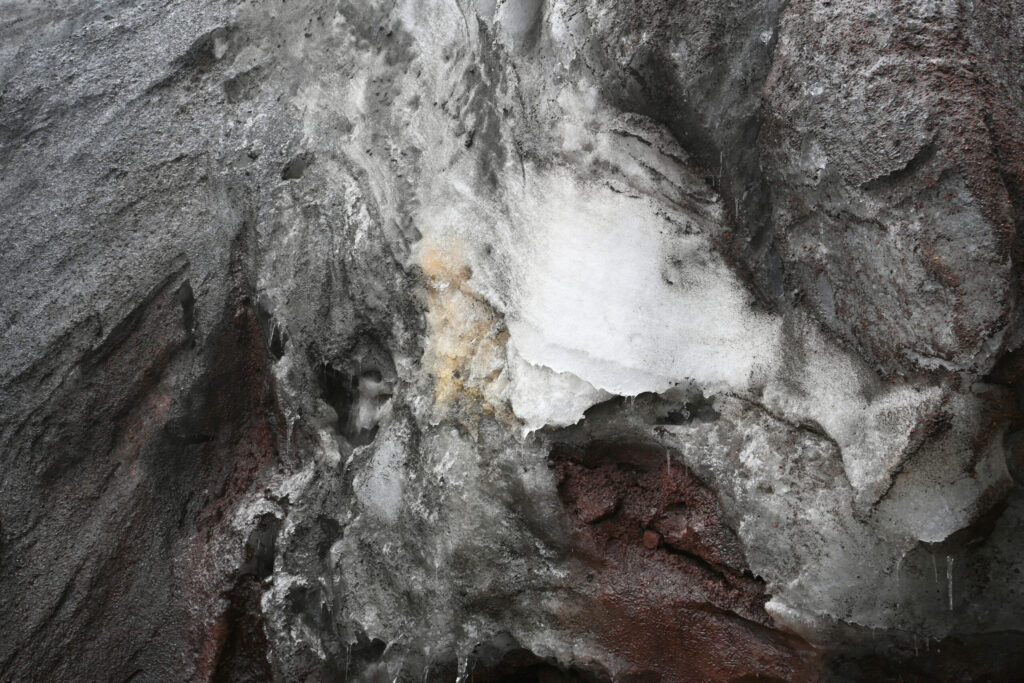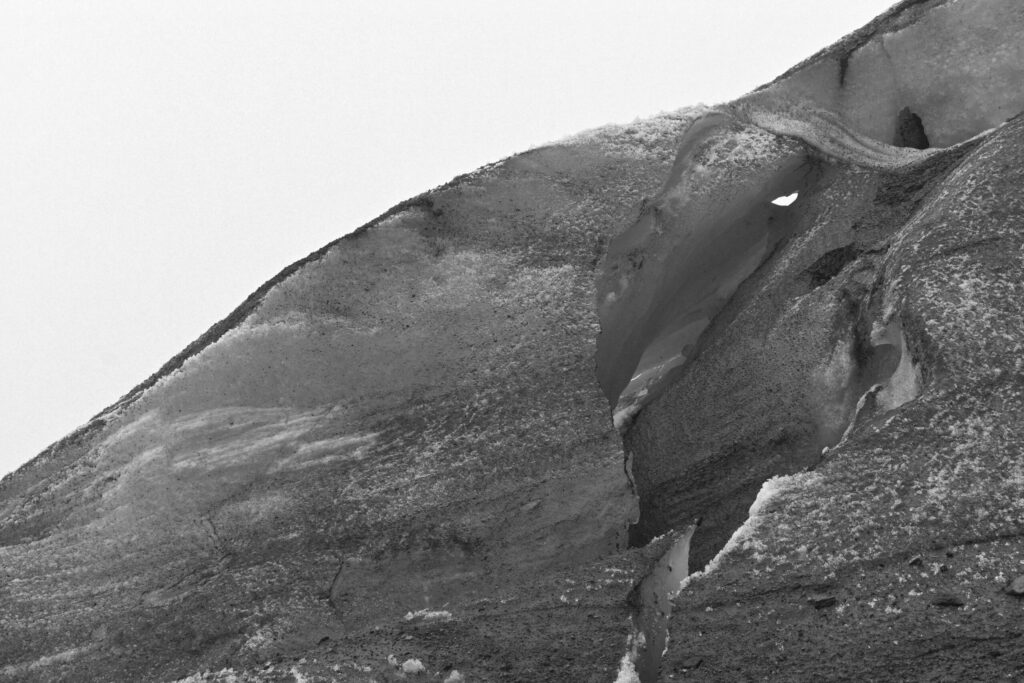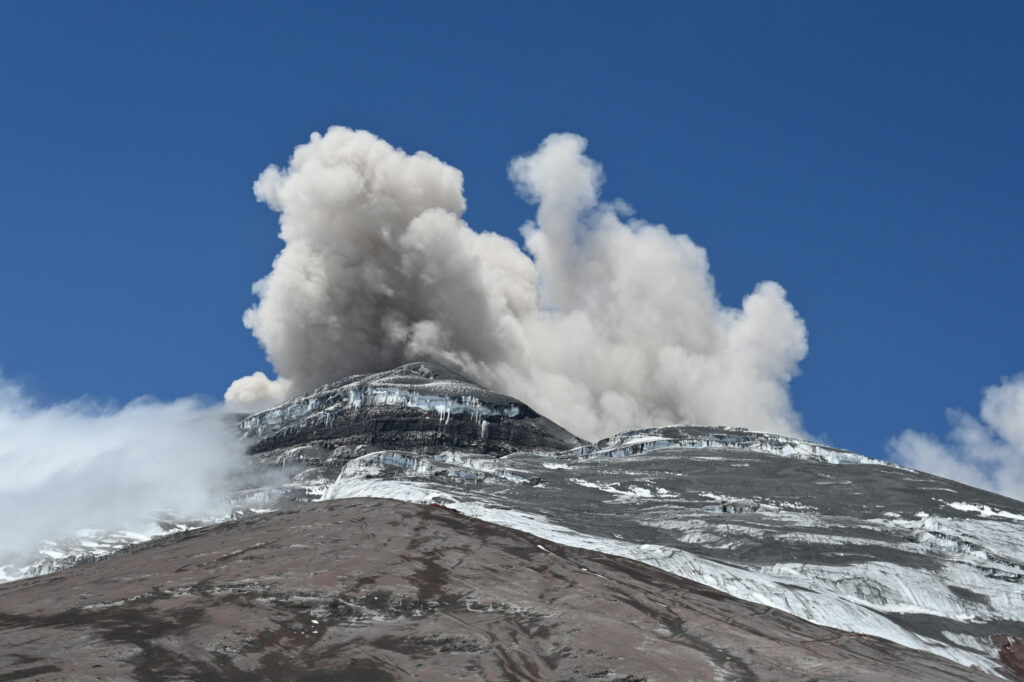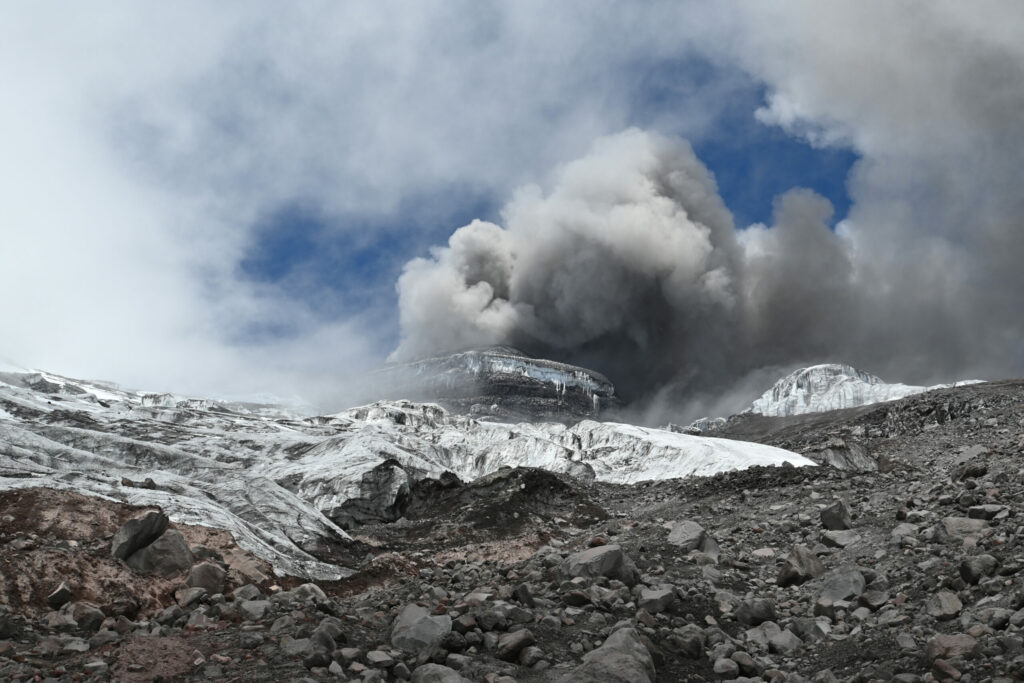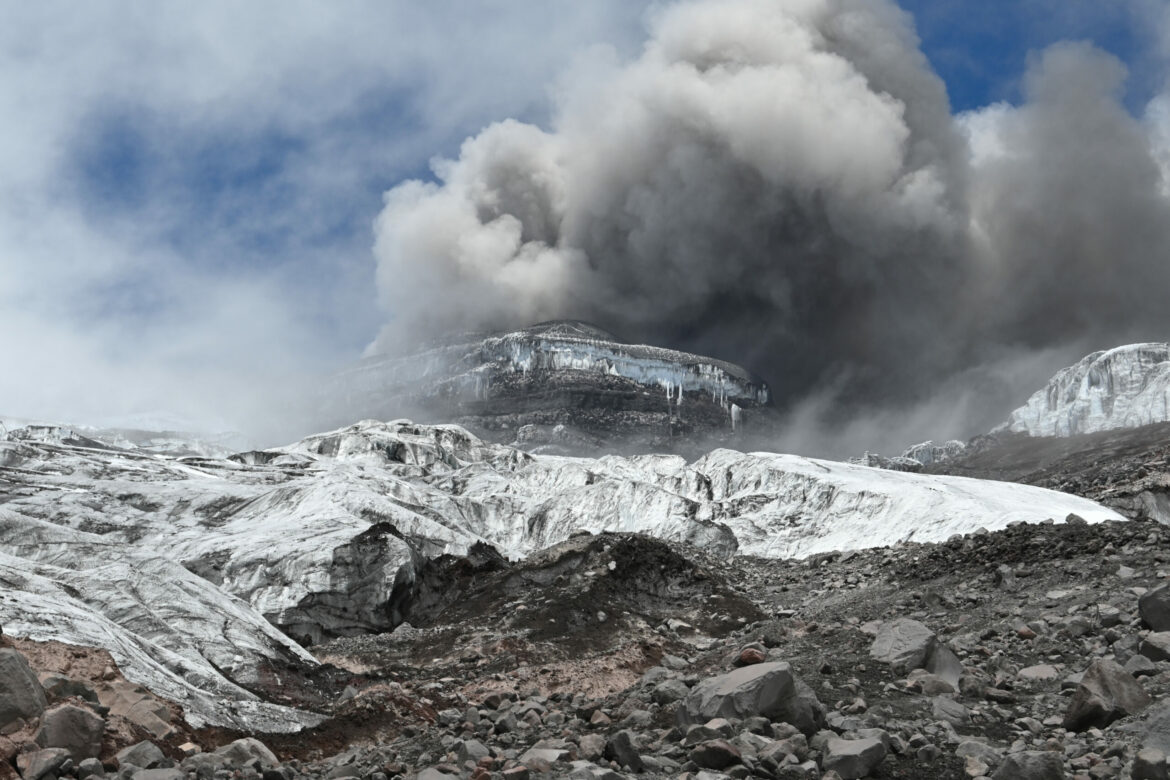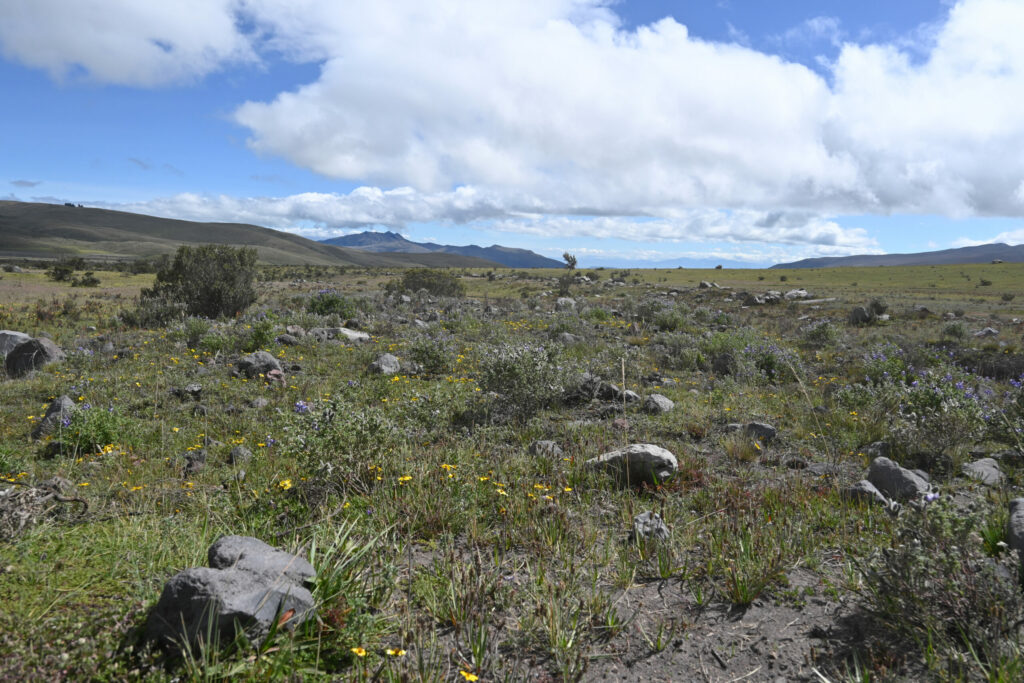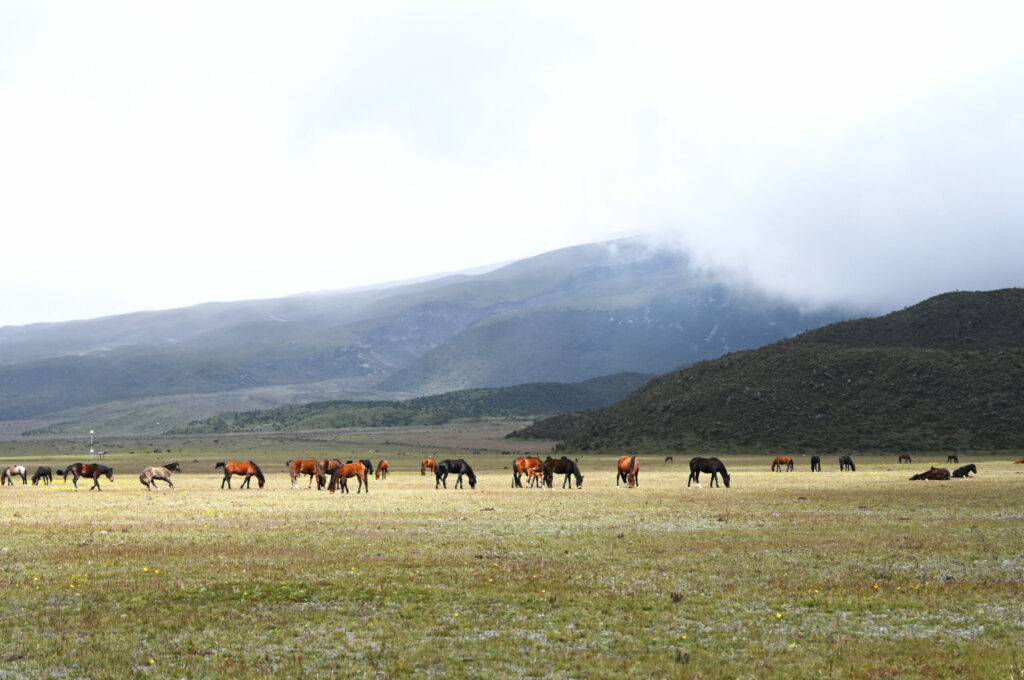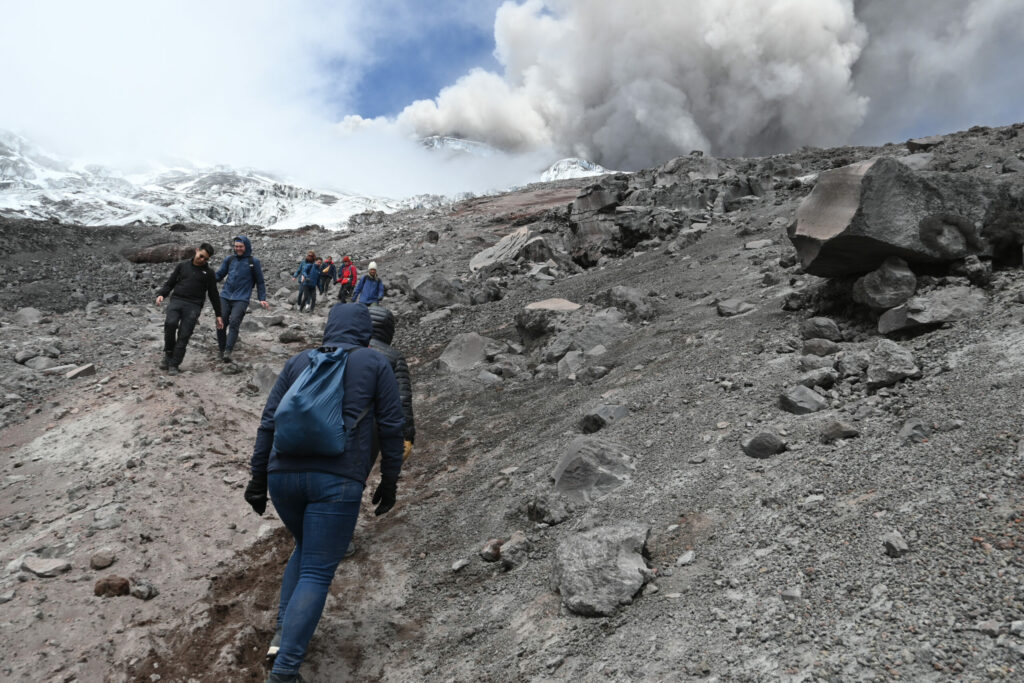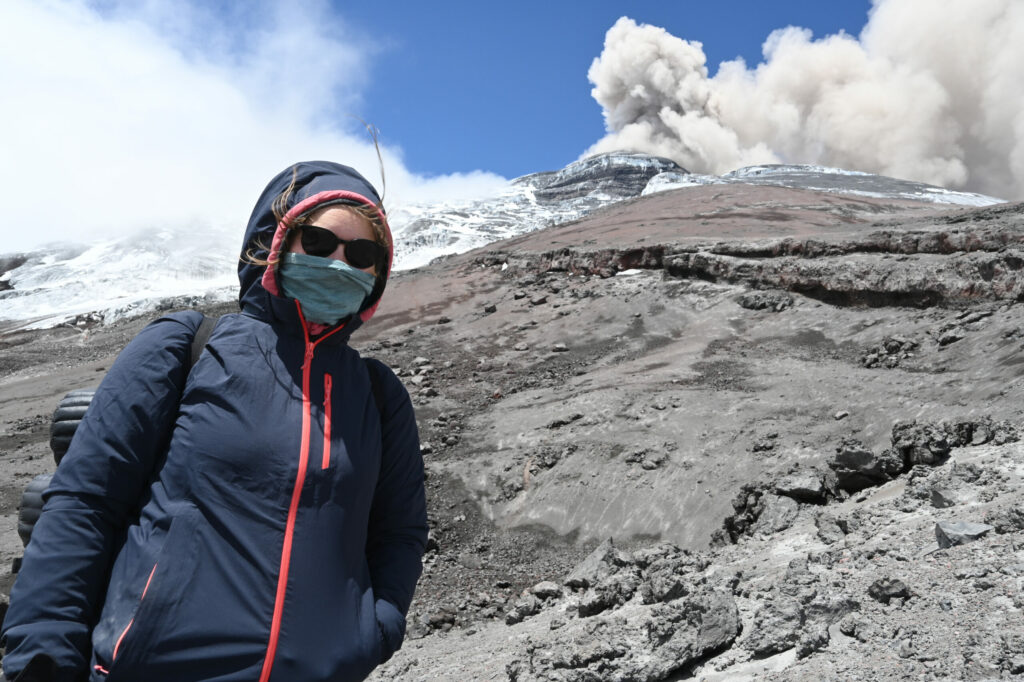We are at 5000 meters at the glacier line of the volcano Cotopaxi, while plumes of grey smoke erupt into the sky. We are simply standing there and taking in the unreal scene. After driving up 1400m and hiking another 800m of altitude in loose lava sand and across boulders and rubble, we are feeling a bit dizzy and short-breathed. We inhale and exhale very slowly and consciously in the thin air while basically wearing everything we’ve got with us. It’s foggy, cold, and the strong wind is relentless. Suffice it to say, the view is worth it all.
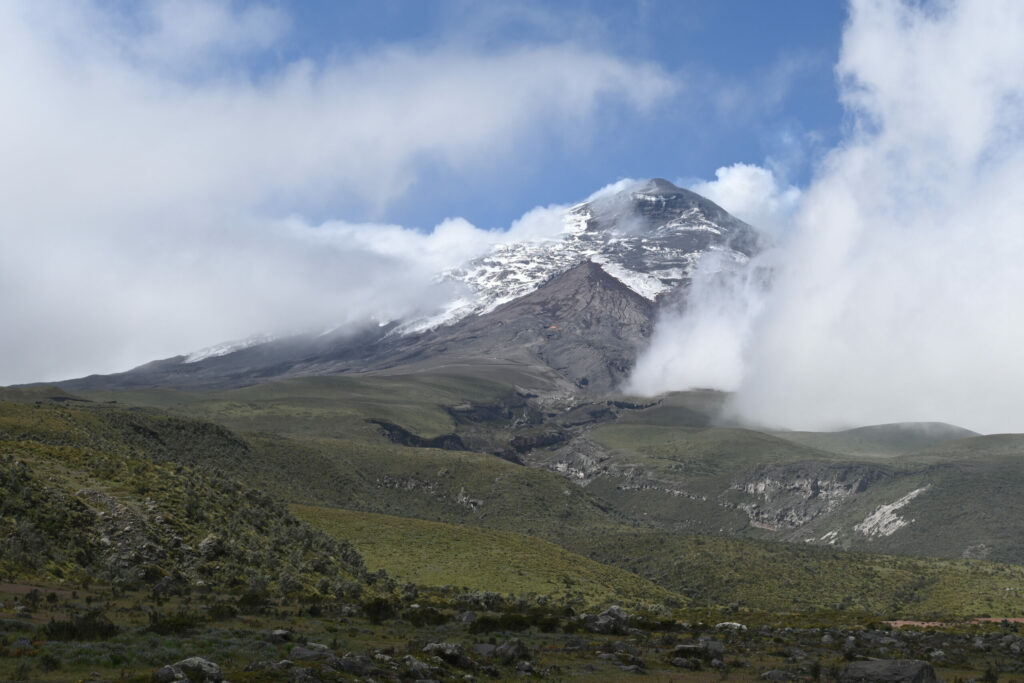
With an altitude of 5987m, the Cotopaxi is the second-highest volcano in Ecuador and one of the highest active volcanoes in the world. It is surrounded by a beautiful nature park that provides a habitat for a variety of animals (e.g. wild horses). The last major outbreak was around 1904 with some smaller ones in the 1940s. A more recent but relatively small eruption happened in 2015 while right now is another phase of mild activity. Fun fact: Cotopaxi is also supposedly the closest point to the moon because of its altitude and proximity to the Equator.
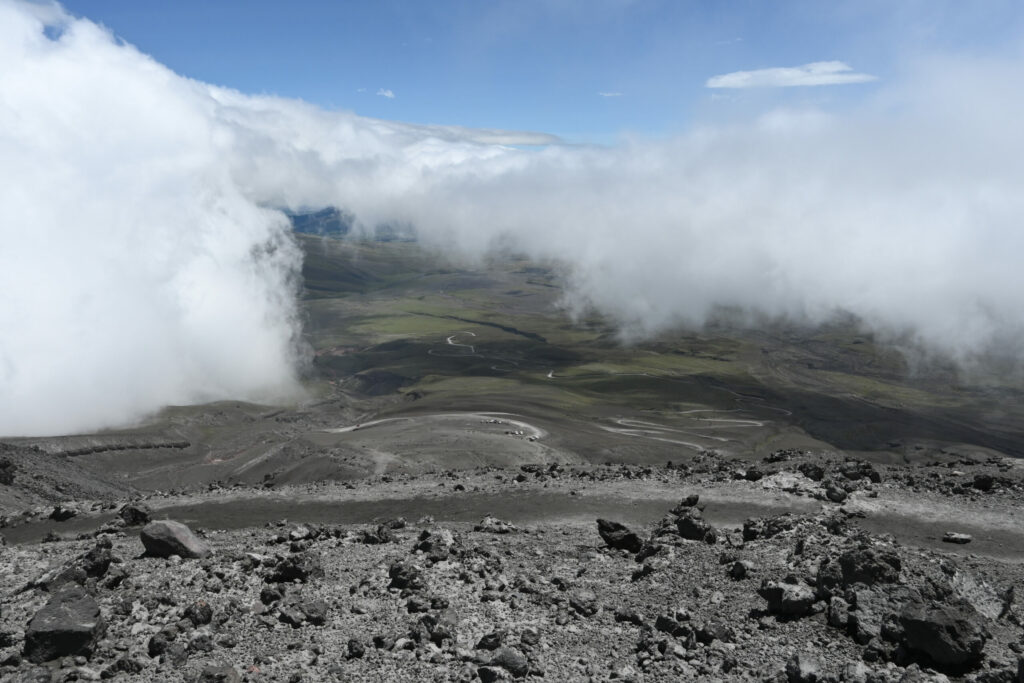
We started our Cotopaxi visit from the nearby city Latacunga, located at 2760m. Its main attractions are the volcanos so we only stayed three nights. After arriving in the evening after a long bus ride from the coast, the first day we only explored the city center and went to a nearby but not very scenic viewpoint. Most time of our first day we spent in cafes and restaurants where we relaxed, read, and worked on the blog. We also still needed to figure out how to organize the Cotopaxi visit. Should we book a tour? Through some research and help from the concierge at our hotel, we figured out that it is possible to get to the entrance of the Cotopaxi national park by bus. Then hire a guide from there (which is much cheaper than booking a tour) or try our luck by tramping up.
We figured a guide would be the safer bet and went with it. At the entrance to the park, a dozen or so cars were tidily lined up waiting for tourists. We asked for the option to ride bicycles on the way down (we heard it is fun and we were missing riding our bikes) and negotiated the price. Our guide Nancy was really kind and spoke clear and slow Spanish, so we were able to understand the majority of what she explained to us during the ~40-minute drive through the park. The time passed quickly and after a quick stop to take some pictures from the base of the volcano, we were already ascending to the parking lot at 4200m.
From there, we hiked up to the glacier. Very slowly, one small step at a time, pushing against the heavy wind, not talking, breathing steadily. Altitude sickness (headache, nausea, shortness of breath, vomiting), which can already occur above 2500m, is a common issue. So our guide was checking in on us regularly. When reaching the glacier, we had some time to take pictures and enjoy the tranquility. We were all alone and luckily the clouds lifted from time to time so we could see the glacial ice sitting on this rough, black surface and the plumes of smoke reaching higher and higher. It’s hard to describe how stunning and unreal this looked and felt.
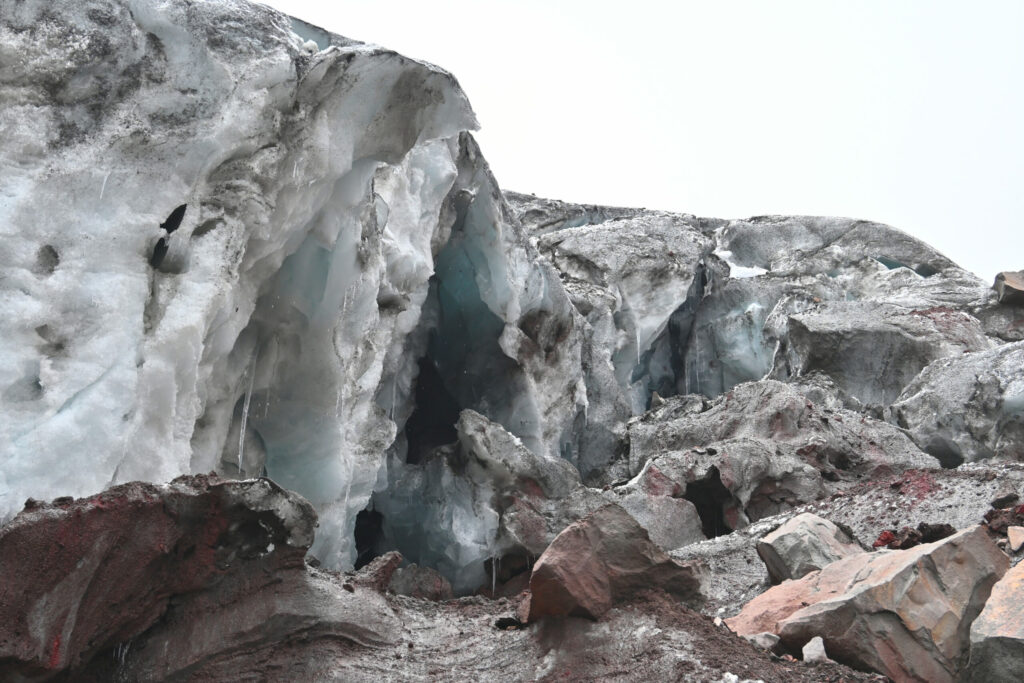
After some time, we went back to the Refuge at 4800m where we had some coca tea and hot chocolate. It was a real pleasure since without moving, the chilling temperatures slowly crept underneath our layers of clothes. On the way down to the parking lot, the sand was very soft and we could almost jump down, similar to how you can run down steep dunes without falling. The only downside was the amount of sand we collected in our shoes.
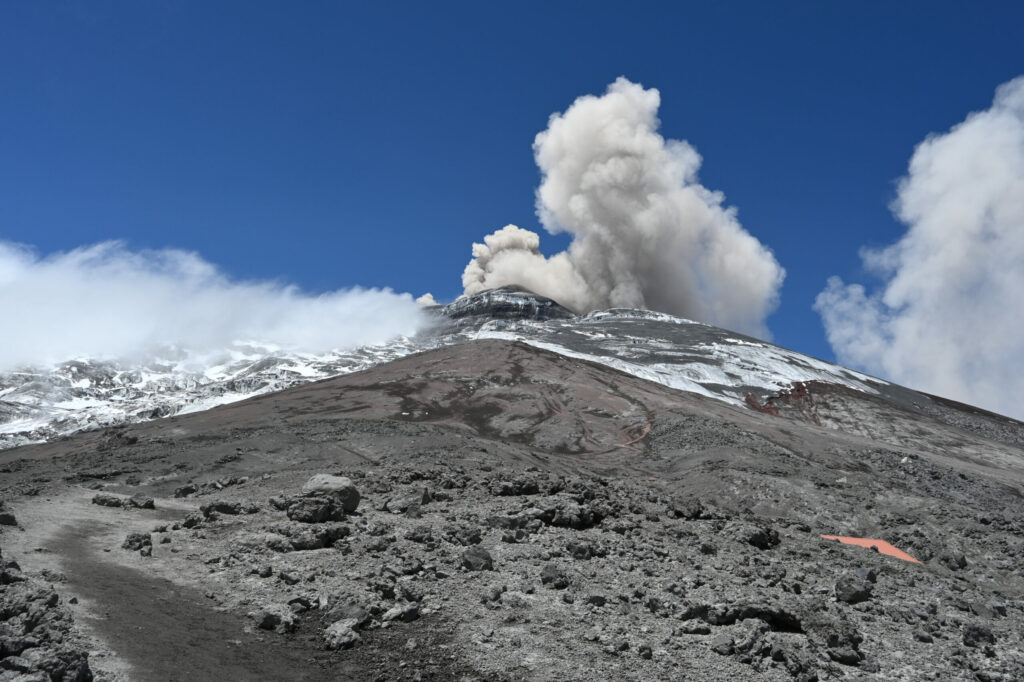
But now it was time for our bike ride. Unfortunately, it wasn’t as fun as we had thought. We were clinging to our breaks the whole time and with the bad suspension of the bikes, it was a very shaky affair (my bike was still better than Simon’s). Because of that and the quick altitude changes, Simon quickly developed a strong headache. I joined him with that later, luckily only after we got back to the hotel. Before going back, though, we visited the nicely made visitor center, explaining the history, flora, and fauna of Cotopaxi Park. That also made us aware of just how much the glacier has melted over a relatively short period, because of the eruptions but even more so because of global warming. Very sad to see! In the afternoon, we lay down at the hotel, nourished our headaches, and recollected the events of the day.
Gallery
